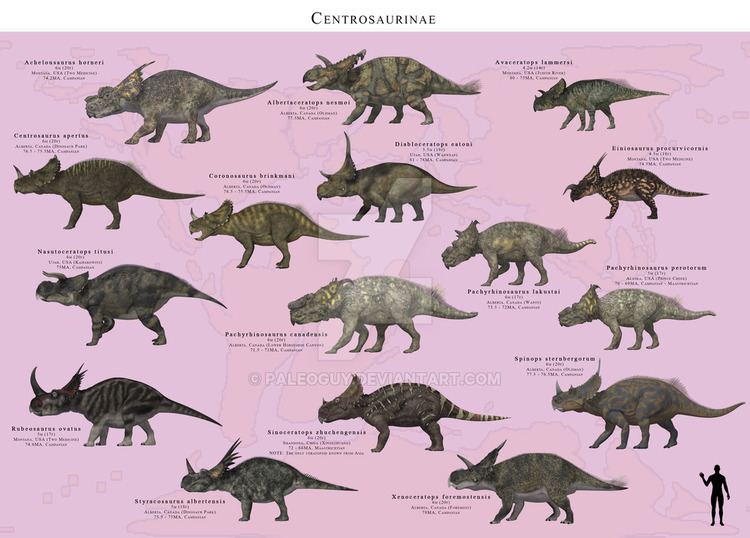Phylum Chordata Rank Subfamily | ||
 | ||
Lower classifications | ||
Pl2 horned dinosaur centrosaurinae diversity
The Centrosaurinae is a subfamily of ceratopsid dinosaurs named by paleontologist Lawrence Lambe, in 1915, with Centrosaurus as the type genus. The centrosaurines are further divided into two tribes, the centrosaurins and the pachyrhinosaurins.
Contents
ClassificationEdit
The below species were found to belong in Centrosaurinae by a 2014 publication (unless otherwise noted):
The cladogram presented here follows a 2012 phylogenetic analysis by Ryan, Evans & Shepherd. Clade names within Centrosaurinae follow Fiorillo & Tykoski (2012).
This cladogram follows the phylogenetic analysis performed by Sampson et al. (2013). As is the case above, clade names within Centrosaurinae follow Fiorillo & Tykoski (2012).
ReproductionEdit
Possible neonate sized centrosaurine fossils have been documented in the scientific literature. Research indicates that centrosaurines did not achieve fully developed mating signals until nearly fully grown. Scott D. Sampson finds commonality between the slow growth of mating signals in centrosaurines and the extended adolescence of animals whose social structures are ranked hierarchies founded on age-related differences. In these sorts of groups young males are typically sexually mature for several years before actually beginning to breed, when their mating signals are most fully developed. Females, by contrast do not have such an extended adolescence.-265" />
